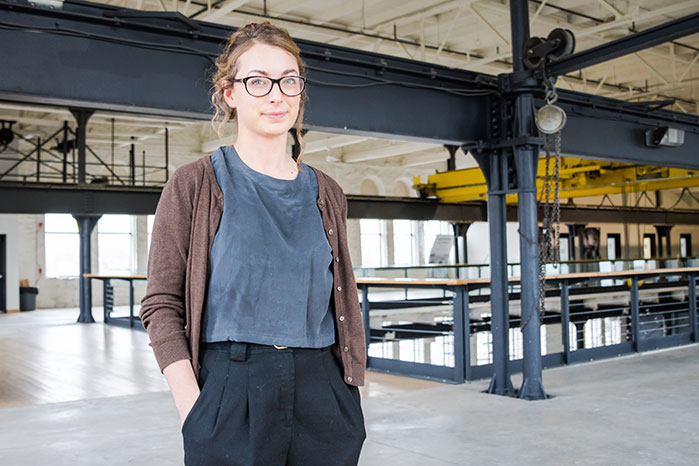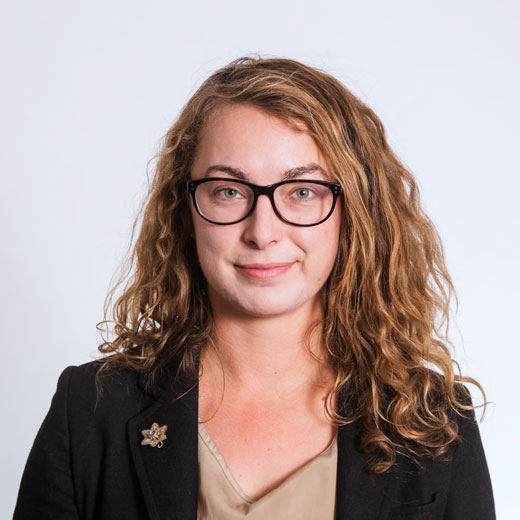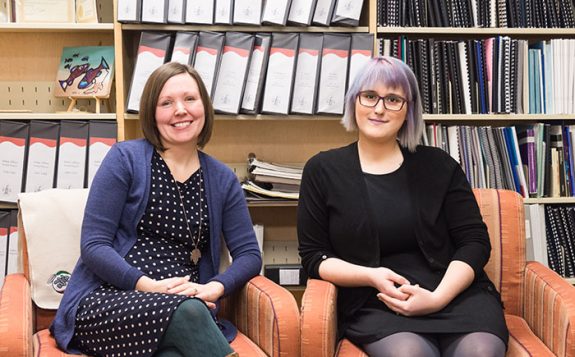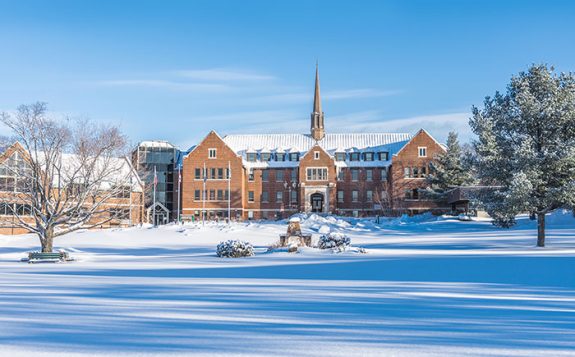Initially, Professor Andrea Pinheiro had no plans to move to Northern Ontario. Like many other aspiring artists, her younger self had set her sights on the trendy Canadian west coast, where she would earn her undergraduate and graduate degrees before setting up a permanent studio to develop her works. However, time spent in Elliot Lake piqued her interest in the cultures, lands, and industries of the north.
In high school, Pinheiro had an interest in both visual arts and environmental causes. When it came time to decide what to pursue in higher education, Pinheiro settled on art, knowing that she could still pursue environmental issues through her artistic expressions. “Working with art means working with people’s perceptions at a deeper level, ideally,” she begins. “Art is about being in some sort of dialogue with people’s perceptions and hopefully helping the world at large.”
After coming to this decision, Pinheiro was introduced to White Mountain Academy of the Arts, a small art school located in Elliot Lake, Ontario. “I never expected or intended to move to Northern Ontario. I had always planned to go to Vancouver in high school but this school came up. The types of things they were doing included a lot of indigenous practices or Anishinaabe traditional practices in the curriculum, but also cutting edge western studios, both of which interested me. White Mountain Academy had a very similar mandate to [Algoma] in terms of Anishinaabe cross-cultural education and working with indigenous knowledge.”
Plus, being located in Elliot Lake, Pinheiro was directly exposed to the various industries, including the neighbouring uranium mines, which peaked her environmentally conscious mind. Thus, much of her earlier work focused on radioactivity and photography, highlighting the nuclear industry, uranium mining, waste storage facilities, among other subjects. “Nuclear issues have always been an important thread in my work. I’ve always been interested in it since high school and when I lived in Peterborough. It was a strange dichotomy living in this beautiful place but also knowing that it was permeated by this invisible radioactivity and the way it just sits up there.”
Unfortunately, White Mountain Academy moved from a four-year to a two-year degree in Pinheiro’s third year. While she wasn’t able to obtain a Bachelor of Fine Arts degree at the institution, the teachings she was exposed to had a profound impact on her and continue to influence her work today.
From Elliot Lake, Pinheiro transferred to the University of Alberta to complete her undergraduate degree, but also to pursue her Master of Arts in printmaking. She later moved to Vancouver, as she had initially dreamt in her high school days. She worked in British Columbia for five years, working in galleries, pursuing her own practices and curating various exhibitions. “It was financially difficult. Plus there was this post-Olympic funding relapse happening after the Vancouver Olympics, so positions were diminishing.”
Having enjoyed her time in Northern Ontario in Elliot Lake, Pinheiro applied for a position in Algoma University’s ever-growing Fine Arts program. “Because I had experienced so much Anishinaabe culture and lifeways through White Mountain, the mandate of the University was really important to me. I knew about the residential school history and the capacities for working with that, and the archives also really interested me.”
Pinheiro began work at the University in 2011. In 2012, she purchased a large business at 180 Gore Street, which doubles as her home and a public gallery space. Named 180 Projects, she purchased the space to allow students to showcase their work, but also to provide emerging artists from across Canada with additional gallery space in the Sault. Renovations to the abandoned facility have been extensive and are still ongoing. “180 Projects has been really important to me. It’s important for students to have an avenue to showcase their work. One thing that is really unique about our program is that final solo thesis. Instead of just creating a few good pieces, our students are doing something different and thinking about creating an entire experience for the viewer. You won’t find that elsewhere.”
Since coming to Algoma, Pinheiro has continued to depict the invisible and visible through a variety of a mediums, and has exhibited her work nationally and internationally. In 2013, Pinheiro published a project she first began pursuing during her graduate studies. “During my grad work, I was looking at issues around different nuclear archives that deal with photographs of the bomb testing sites of Nevada. At that time, I came across this list of different names that had been assigned to all of the bombs tests throughout history. I had been really fascinated by the list that came with the bombs. I cut it into stencils and painted it on walls. But I didn’t feel like it was the right format for displaying it and nor did it give space to the bomb tests that didn’t have names. I think about 1,200 out of the 2,500 had names assigned to them.”
Wanting to give the bombs the appropriate forum, she created the Bomb Book. “It ended up being 12 volumes to cover all of the bombs. It was one page per name. For the bombs that aren’t named, they are given a blank page. Each book was about 200 and some pages. I have one copy here and most are out in BC, one is in the national gallery library. There were 10 copies and two artist proofs.”
More recently, Pinheiro is working with material history, detailing the relationship between objects and images. She’s hoping to use photography and drones to highlight the tailing sites in Elliot Lake. “So much of the material that went into the American nuclear program is from Elliot Lake. A massive amount of it, actually. When mining happens, people think about that but forget about the material connection to the end product. I’m interested in how other materials and places that don’t seem linked retain their linkage through histories.”
Aside from working with print, mixed media, paint, ink, video, and installation, Pinheiro is also working to develop new courses at Algoma U and with Anishinaabe Studies and Shingwauk Kinoomaage Gamig (SKG). The new courses, which are similar to those she took herself while at White Mountain, are slated to begin in the spring of 2017. “There will be a lot of opportunity for people to get hands on work with traditional Anishinaabe art practices.”
Pinheiro encourages students to study visual arts at Algoma for a variety of reasons, but cites the University’s special mission as the most important. “There are unique opportunities to be engaged in the growing conversation that’s happening in the Canadian and international art world where settler and indigenous artists can work around issues of reconciliation through art as a vehicle. Because we have the residential school centre here and the mandate of the University, the capacity to be involved in that conversation is quite incredible. You can be involved in this community and make things happen.”
For more information on Pinheiro, please visit her website.
Share Article





